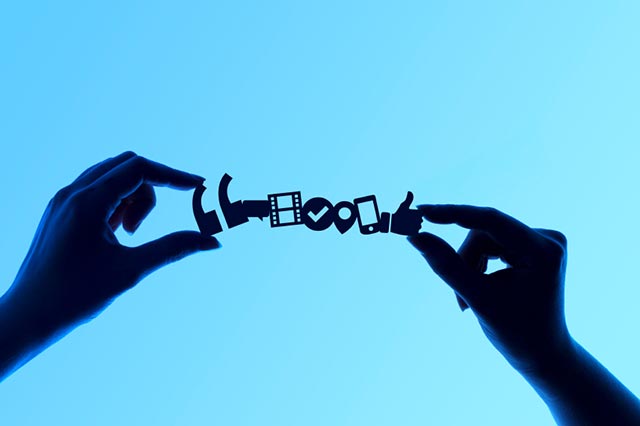I once wrote a post about the potential of advertising to die as an industry, and now I’m thinking the same thing of its closest cousin (fraternal twin?), marketing. In reality, here’s what will probably happen: neither will die, per se, but both will need to evolve. I’ve written before on how marketing can evolve, and here’s another take on the ‘5S’ Model that may represent the future of marketing.
There’s some new work — it’s more opinion and less fact, which is a distinction many people in the modern world seem to have trouble with — out of Wharton (UPenn business school) on the potential death of traditional marketing, and it makes a couple of great points. Namely, the idea of a traditional sales funnel — which most business schools are still teaching MBA candidates, sadly — has shifted about 95,471 times since about 2003 alone. As author Curtis Hoagland says:
Technology catalyzed five trends that portend the death of traditional marketing:
-
more media and information;
-
greater access to this media and information;
-
self-organization of this media and information by narrower and narrower affinities;
-
control of the means to create and distribute this media and information;
-
tools to parse this media and information (and in so doing, our attention) in both public and private communication.
Yep. Concur.
Here’s what is really happening, and the article references this as well: in general terms, the power in any interaction that could be a sale? It’s moving away from the brand and towards the consumer. Whenever companies create these big ‘lead generation’ programs — which some do well, but many do in a fraught way based on non-adaptive marketing automation — the one thing they seem to miss is that the king of lead generation is referral. If you want to know about a product, a trip you could take, a movie you should see, a summer read, etc.. you tend to ask your friends. Some do this on social media (“Any Greece tips, you guys?”) and many do it via SMS or just talking to their friends, but we’re social animals and we organize in networks/nodes of people. That’s how we get information about what to do, see, and experience.
So for years you’ve had marketing departments organized around ‘power branding,’ whereby the brand is the thing and it’s more important than the end consumer. The brand gets loyalty from that consumer and then ‘the power of the brand’ takes over. A lot of people running marketing departments still think this way, but that seems like an outdated way of thinking. I don’t even think ‘brands’ and ‘loyalty’ exist the way they did even 20 years ago; I think ‘customer experience’ and ‘customer satisfaction’ are significantly more important. (Sidebar: if ‘loyalty’ is less relevant — it might have been replaced by ‘reputation’ — then shouldn’t we redo our entire compensation model for sales guys?)
So you come to this fork in the road with marketing where what matters is really:
- What your friends/loved ones say to you
- The power of ‘the story’ or ‘the narrative’ the organization is putting out
Marketing departments get this wrong all the time too: they think “having a great story” means “having great products” and/or “having a great logo.” It means neither of those. We made marketing less relevant by talking about branding as a series of bullet points on a PDF. Marketing, plain and simple, is about explaining the value of your product/service in the context of how it’s going to make someone’s life better. We get that twisted in a million different ways, the best of which is “The Shrine of Big Numbers.”
My man from the UPenn site says the same thing:
The success of marketing depends on reaching people when they are emotionally engaged.
Despite the promise of social advertising and programmatic media buying, these emotional moments are largely unknowable to either marketers or even to individuals themselves. Creative cannot keep up with data, because marketers create advertising rather than narratives.
We create advertising rather than narratives; that means we’re creating an interruption — which advertising inherently is — as opposed to a story. By this point, consumers know how to ignore an ad. They can’t ignore a good story or relationship.
Here’s what I would assume is likely to happen:
- Average CMO tenure is about 4 years at present.
- In the next 3-4 cycles (12-15 years), we’ll see a phasing out of this old-school, ‘power-branding’ concept.
- Hopefully, we’ll get people in who understand digital engagement, how to reach people there, targeting, story-telling, etc.
- Ideally, that will be ‘Act III’ of first-world, product-driven marketing.
Here, of course, is part of the problem — via this tweet:
People — especially senior management — tend to focus their attention on where the money is. 15% or less is coming from digital products and services? Then it’s probably getting 10% or less of the attention. That’s just how it works.
So the next major step is figuring out how to monetize digital more from a marketing/advertising sense — and there are models for this, including some movie production companies. The first step is always pretty simple: stop treating ‘the digital people’ and ‘the traditional people’ as separate silos. Almost every company I’ve ever seen/observed does that, and it makes no sense. If the goal of everyone is showcasing the value and making money, how/why does it matter what product you mainly work on? It shouldn’t, but it often does. That’s fiefdom, in-group vs. out-group bullshit — and it needs to go away as a first step in making marketing more relevant in the next 10-15 years.
What do you think: could traditional marketing die, or will it evolve into something else?


Reblogged this on Gr8fullsoul.